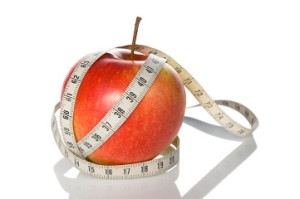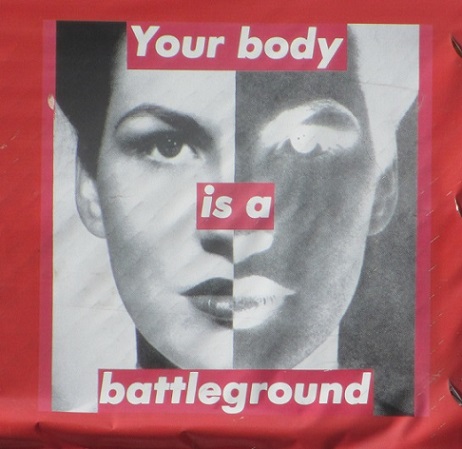How To Keep Going Until You Reach Your Goals
You likely already know a whole foods, plant-based diet is the healthiest and most compassionate way to eat, but perhaps you haven’t managed to make the transition despite good intentions. How can you commit to a diet built on vegetables, fruits, beans, whole grains, nuts, seeds, herbs, and spices, with only a drop of processed foods – and make it work for you? A transformation in eating may appear daunting, but when you break it down to a little bit at a time, you can accomplish this.
Understanding and working with predictable stages of change paves the way for lifestyle transitions that matter. The theory of “Stages of Change” explains why you don’t immediately ditch unhealthy choices that are a mismatch for your own goals and values.
The process of change, for most people, is not like whizzing up multiple floors on an elevator.
It’s more like taking the stairs. The important things are to know where you are climbing to and to keep going. Don’t mistake a landing on the stairway for arriving at the top. You may spend long stretches stuck on a landing, but you can be gathering information and strength for the next movement upward.
It takes energy to keep climbing those stairs. The energy comes from your wish to be healthy, help others, care for animals, and other life-affirming goals.
Occasionally you might fall down a few stairs. Not to worry, this happens to everyone. Pick yourself up and keep going.
The Five Stages of Change
Researchers have identified these stages of change on the path to healthier choices.
Precontemplation. At this stage, you are not even aware you have a problem or simply don’t care. The fact you are reading this post shows you have likely gotten past this state of denial.
Contemplation. You now acknowledge and care about your choices, and want to improve, but you are not sure the pain of breaking old habits is worth the gains. If you are in this difficult stage of internal conflict, you can still resolve to move forward.
You can break free of contemplation through a number of actions. Build commitment by learning more about the reasons to got plant-based or cut out processed and fried foods, if you are already vegan; make a list, and put it somewhere you will see and add to it frequently.
Visualize yourself eating delicious plant-based meals and snacks. Talk to and spend time with people already eating whole foods, plant-based and find out how and why they made their transition. See if one of those people will work with you as a mentor. Gradually start eating more healthy plant foods so that your tastes and habits begin to transform. Think about another change you made in your life, and write down the strategy that enabled you to make that transition.
Preparation/planning. This is the next milestone for you. It will happen when you have worked through a chunk of your own ambivalence and are making concrete plans for moving ahead, either permanently or for a test period. Preparation does not have to take a long time, but it does need to be thoughtful. This stage is fun, but also work. Some people are tempted to skip it and jump right into action. This could be a mistake. You will need to build the confidence to succeed.
Action. You are now eating a mostly or totally a whole foods, plant-based diet. You experience the thrill of success and feel great about your choices, with your major task being to keep on track one day at a time. It may happen that there are occasional lapses, especially in the beginning. Take these as learning experiences, not discouraging failures.
Maintenance. Your plant-based diet has become a habit. You still need to work to make sure
you don’t become complacent and relapse to old choices. Maintenance is an active process. Long-term and permanent success is achievable when you realize that simply coasting on past results is not enough.
You should do something to move forward at least every week. It’s like balancing on a bicycle. As long as you are pedaling, it’s easy. If the bike stops, you lose your balance and fall off. Anything new and positive can reinforce your momentum.
Try a new food, recipe, or restaurant. Shop in a different grocery or natural food store. Read a book on nutrition or animal rights, watch a film on farmed animals, or find a related online group to join. Spend time in the beauty of nature, or volunteer with animal or human causes that matter to you. Bring some food into work to share. Paint or sing or write to express yourself. Get creative – there’s no limit on the options that will keep you going with your new eating choices.
Three Tips That Can Propel You Up the Stairs
Here are three versatile strategies that can work no matter where you are in the stages of change.
First, be open-minded, including to your own doubts. If you start thinking “I can’t do this,” then tell yourself “Hey, maybe I can.” Be ready to try new experiences. If you don’t like a food at first, take small tastes of it over several weeks. Your preferences may noticeably change in that timeframe. Let the process of change gradually work its magic. If you try to talk yourself into a major behavior leap you are not ready for, it may backfire, with you finding yourself

Visualize the potential rewards of a whole foods, plant-based diet: ideal weight, prevention and reversal of chronic disease, the energy for the activities you want to accomplish
spiraling right back into old habits. Acknowledge the fears and difficulties that go with uprooting old habits, but move ahead anyway.
Second, use visualization or imagery to reinforce your progress and planning. To do this, relax in a comfortable position in a safe, quiet place. Close your eyes and picture yourself, as vividly as you can, taking the actions you want. For example, picture yourself making a shopping list with a wide range of whole plant foods, then getting in your car and driving to the store, parking, getting a shopping cart, and then picking the healthy foods off the shelf and putting them in your cart. The more vividly you mentally rehearse this process, the easier it will be for you to actually carry it out and solidify new habits.
Finally, find a role model or friend to work with you, regardless of where you are in the stage of change process. Use the power of the strong plant-based community, either near where you live or online, to get to that top step and stay there.
If you enjoyed this post, you may want to learn which plant-based diet is the easiest way to get to and stay at your ideal weight while preventing and even reversing chronic illness.
Intrigued? Now you can use our Whole Foods Blog Finder to target informative, fun postings on whole foods, plant-based diets. Quick information at no cost!
Blog posting by Janice Stanger, Ph.D. Janice authored The Perfect Formula Diet: How to Lose Weight and Get Healthy Now With Six Kinds of Whole Foods. The book outlines a plant-based diet you can transition to in a series of achievable steps – one at a time.
Tags: getting healthy, lose weight, Perfect Formula Diet, Plant-based nutrition, process of change, reverse chronic disease, stages of change, visualization, weight loss, whole foods plant-based diet







